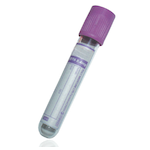Suitable Specimen Types
- Serum
- EDTA Plasma
- Li Hep Plasma
Specimen Transport
UsualSample Processing in Laboratory
Centrifuge and place in toxicology box in cold room.Sample Preparation
Centrifuge.Turnaround Time
3 working daysSample Stability
4 ºCClomipramine
General Information
Clomipramine is a tricyclic antidepressant that has been used since 1961. It is the 3-chloro analogue of imipramine and share many properties with that drug. It is available as the hydrochloride salt in 10 - 100 mg normal-release capsules and tablets and a 75 mg extended release tablet for oral administration and a 12.5 mg/mL solution for i.v or i.m injection. Adult daily doses range from 30 - 300 mg in one or more portions.
The adverse effects of clomipramine toxicity include nausea, dry mouth, blurred vision, mydriasis, drowsiness, confusion, dizziness, headache, asthenia and postural hypotension. Neuroleptic malignant syndrome has been reported. Serotonin syndrome was described in a patient with therapeutic plasma levels who was receiving 200 mg daily. Clomipramine in overdose casues central nervous system depression, agitation, convulsions, hypotension, hyperpyrexia and cardiac arrhythmias.
Patient Preparation
For TDM, sample should be taken prior to dose. If toxicity is suspected, take sample at earliest opportunity
Notes
Please avoid use of gel seperator tubes.
Please note this assay is not currently UKAS accredited
Reference Range
Therapeutic Range: 90 - 250 ug/L.
Analysed by LC-MS/MS
Toxicity associated with clomipramine levels > 400 ug/L.
Specifications
- EQA Scheme?: Yes
- EQA Status: LGC QUARTZ, LGC CLIN TOX
